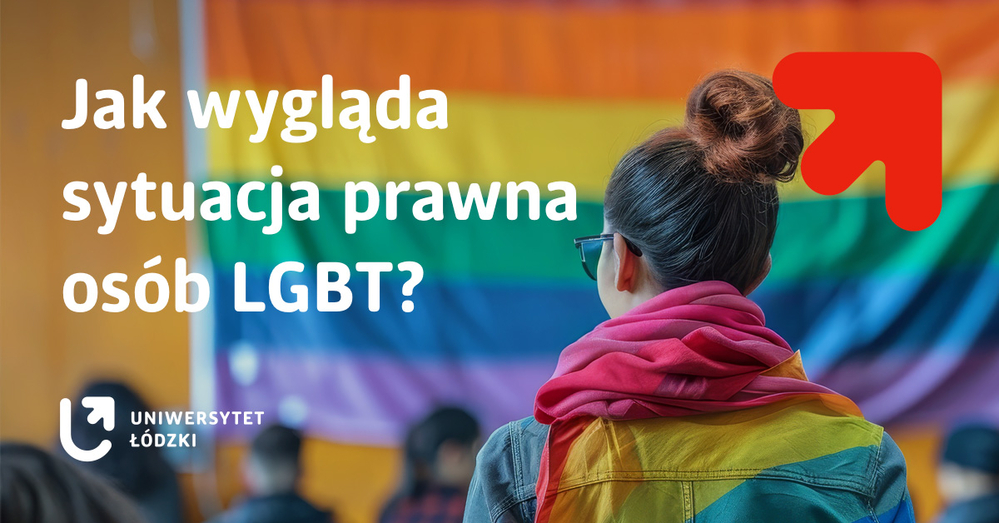
Referring to the values of the University of Lodz, such as, among other things, cooperation and respect, our university has joined the Pride Month trend in many areas. The participation of nine male and female students of the Faculty of Law and Administration of the University of Lodz in the Erasmus+ BIP "LGBTI* in European Law and Beyond" was one of them. The activity was supervised by Dr Karolina Mendecka.
Erasmus+ BIP "LGBTI* in European Law and Beyond"
The "LGBTI* in European Law and Beyond" programme is an interactive workshop based on the comparative research on the protection of SOGIESC (sexual orientation, gender identity and expression and sex characteristic) in international and national laws in Europe. It covers aspects ranging from conceptual and pragmatical issues related to SOGIESC, to the evolution of the laws regarding SOGIESC: the legal forces and
tools pushing for changes and the one resisting, to the diversity of legal approaches and the importance of the cultural context.
Summary of the legal regulation of LGBT people in the European Union
As a result of their participation in the workshop "LGBTI* in European Law and Beyond", the following students:
- Vladislav Mongialo,
- Katarzyna Kacprzyk,
- Natalia Piątkowska,
- Julia Król,
- Julia Henc,
- Julita Maciejewska,
- Agnieszka Majda,
- Alicja Maciejewska,
- Aleksandra Cieśla,
- Jakub Pietrasik,
have developed an extensive analysis of the legal regulation of LGBT people in Poland, against the background of the European Union.
We encourage you to read the entire document in English: PDF
It contains, inter alia, a historical outline of the laws regulating not only same-sex marriage but also information on when homosexual acts ceased to be punished on our continent. Interestingly, Poland was in the vanguard of countries decriminalising such acts and was the second country in Europe to adopt relevant legislation.
We can also find out what the legal regulations regarding civil partnerships are. What is the difference between a civil partnership and a marriage? What are the benefits of being in a civil partnership? How does Poland compare with other European countries on this issue?
Additionally, legal issues related to gender reconciliation requirements are discussed.
What formal difficulties must those who wish to undergo such a legal procedure overcome?
LGBTQ+ – what does the acronym stand for?
Each letter in the acronym LGBTQ+ stands for a group that is a part of the Rainbow Community. You can often come across its extension, i.e. LGBTQIAP+. Below we explain what each of the letters means:
L – lesbian: any woman who feels attracted to other women
G – gay: any men who feels attracted to other men
B – bisexual: anyone who feels attracted to more than one gender
T – transgender: anyone whose gender identity is different from the one assigned at birth
Q – queer – anyone whose sexuality or gender identity does not fit into strict categories
I – intersexual: anyone whose physical characteristics (i.e. body anatomy) do not fit into a strict understanding of biological or social gender.
A – asexual: anyone who feels no attraction to others (totally or partially)
P – pansexual – anyone who feels attracted to people regardless of their orientation or gender identity.
The plus symbol in the abbreviation LGBTQ+ denotes all those who subscribe to this culture but who are not indicated in the letters. Both the above acronym and LGBTQIAP+ are completely correct, but the shorter version is used more frequently.
Explanation of the acronym after a study by Hubert Drabik.
Source material: Dr Karolina Mendecka, mgr Marta Mucha (Faculty of Law and Administration, University of Lodz), Dr Katarzyna Liberska-Kinderman (Communications and PR Centre, University of Lodz)
Edit: Michał Gruda (Communication and PR Centre, University of Lodz)
The mission of the University of Lodz is to conduct reliable research and actively disseminate facts and research results so as to wisely educate future generations, be useful to society and courageously respond to the challenges of the modern world. Scientific excellence is always our best compass. Our values include: courage, curiosity, commitment, cooperation and respect.
